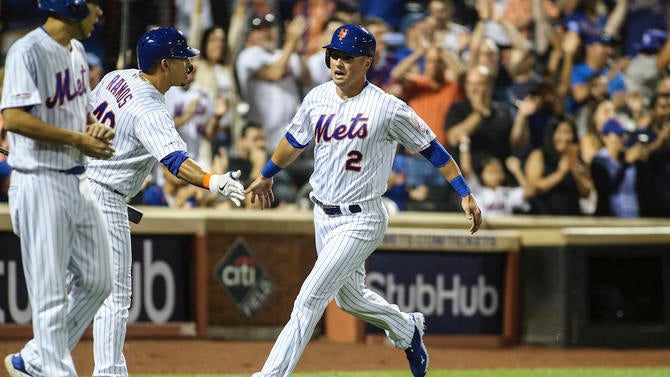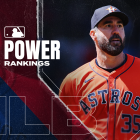The trade deadline is often misinterpreted as being the final buzzer for front-offices to add to their rosters. While the restrictions and rules are indeed tighter, there are still options for clubs to manipulate rosters and add big league players to a roster despite the deadline passing.
In years past, teams have had the luxury of the extended waiver deadline to make last minute deals through August. With the elimination of the waiver deadline this year, however, the ways in which teams can make roster additions from here on out are a bit more complicated.
The rulebook states that 4 p.m. ET on July 31 is "the last point during the regular season at which players can be traded from one club to another." The buzz word here is "traded." While the potential for a blockbuster trade is likely all but over, there are still ways through waiver claims, free agency, and expanded rosters to continue to add to a roster.
Keep in mind, a player must be included on the 40-man roster by Aug. 31 in order to be eligible for the 25-man postseason roster.
Since the deadline, the Mets have signed Joe Panik and Brad Brach after both cleared waivers, Washington inked Greg Holland to a minor league deal, and Oakland landed right-hander Matt Harvey on a minor-league deal.
How are all these veteran players switching teams post-deadline?
Allow us to demonstrate the ways in which players can continue to be added as teams approach the final stretch run.
Waiver claims

Prior to this year, players were allowed to be placed on waivers, and if claimed, the team who placed the claim on the respective player would have 48 hours to work out a trade. The July 31 deadline is now the only deadline, which means players can still be waived, but no trading between big-league players is allowed. More on minor-league players below.
In other words, players can be put on waivers with the understanding that the waiving team will receive nothing in return. A player can only be claimed off waivers if the claiming team is willing to take on the remaining amount of the player's contract.
If a player clears waivers, he can be removed from a team's 40-man roster and assigned to a minor-league affiliate. If a player is outrighted off a 40-man roster twice, he has the right to elect free agency (i.e. Joe Panik).
Why would a team waive a player if they get nothing in return?
The most plausible reason for a team to waive a player is to get the remaining amount of a player's contract off their payroll; from likely a team out of contention. For example, the Blue Jays recently waived Freddy Galvis who was immediately claimed by the Reds. Cincinnati agreed to pay the rest of Galvis' $4 million contract (which includes a club option for 2020), while the Blue Jays were relieved of Galvis' salary and has allowed youngsters Cavan Biggio and Bo Bichette more playing time opportunities.
Possible waiver candidates: Hunter Pence, Starlin Castro, Kelvin Herrera, Alex Colome, Ian Kennedy, Curtis Granderson, Edwin Jackson
Free-agent signings
The less-complicated process of adding to a roster is simply by signing available free agents.
We recently highlighted a handful of free agents who could help a contender down the stretch run, which included Tyler Austin and Nick Vincent who both signed minor-league deals this past week.
Possible free-agent candidates: Eduardo Nunez, Mark Reynolds, Tony Sipp, Dustin Garneau, James Shields
40-man roster loophole
While players on the 40-man roster are not allowed to be traded, players currently playing on minor-league contracts can. As long as the player is under a minor league contract, teams are allowed to trade those players throughout the year with respects to the August 31 postseason roster deadline.
While the odds of a player on a minor-league contract turning into an impact contributor is slim, there are a handful of known veterans currently playing the role.
Possible loophole candidates: Tim Federowicz, Erik Kratz, George Kontos, Ricky Nolasco, Marc Rzepczynski
Expanded rosters
Perhaps the most familiar method for adding depth to a roster post-deadline is through the expanded roster period, only the difference this year is that expanded rosters are not as expansive as they used to be.
Under the new rule changes, from Sept. 1 through the end of the championship season, all teams are required to carry 28 players on the active roster. In prior years, big-league clubs were allowed to carry all 40 players on the 40-man roster.
While not a huge bump, teams can add three additional players to their 25-man roster.
Expanded rosters candidates: A.J. Puk, Cristian Pache, Ian Anderson, Joey Bart, Gavin Lux






















